Refine search
Actions for selected content:
10306 results in History of science: general interest
3 - Theodore von Kármán
-
-
- Book:
- A Voyage Through Turbulence
- Published online:
- 07 October 2011
- Print publication:
- 08 September 2011, pp 101-126
-
- Chapter
- Export citation
7 - Stanley Corrsin
-
-
- Book:
- A Voyage Through Turbulence
- Published online:
- 07 October 2011
- Print publication:
- 08 September 2011, pp 238-275
-
- Chapter
- Export citation
10 - Robert H. Kraichnan
-
-
- Book:
- A Voyage Through Turbulence
- Published online:
- 07 October 2011
- Print publication:
- 08 September 2011, pp 329-372
-
- Chapter
- Export citation
5 - Lewis Fry Richardson
-
-
- Book:
- A Voyage Through Turbulence
- Published online:
- 07 October 2011
- Print publication:
- 08 September 2011, pp 187-208
-
- Chapter
- Export citation
8 - George Batchelor: the post-war renaissance of research in turbulence
-
-
- Book:
- A Voyage Through Turbulence
- Published online:
- 07 October 2011
- Print publication:
- 08 September 2011, pp 276-304
-
- Chapter
- Export citation
12 - Philip G. Saffman
-
-
- Book:
- A Voyage Through Turbulence
- Published online:
- 07 October 2011
- Print publication:
- 08 September 2011, pp 393-425
-
- Chapter
- Export citation
Preface
-
-
- Book:
- A Voyage Through Turbulence
- Published online:
- 07 October 2011
- Print publication:
- 08 September 2011, pp xi-xvi
-
- Chapter
- Export citation
1 - Osborne Reynolds: a turbulent life
-
-
- Book:
- A Voyage Through Turbulence
- Published online:
- 07 October 2011
- Print publication:
- 08 September 2011, pp 1-39
-
- Chapter
- Export citation
9 - A.A. Townsend
-
-
- Book:
- A Voyage Through Turbulence
- Published online:
- 07 October 2011
- Print publication:
- 08 September 2011, pp 305-328
-
- Chapter
- Export citation
6 - The Russian school
-
-
- Book:
- A Voyage Through Turbulence
- Published online:
- 07 October 2011
- Print publication:
- 08 September 2011, pp 209-237
-
- Chapter
- Export citation

Narrative of a Voyage to the Pacific and Beering's Strait
- To Co-operate with the Polar Expeditions: Performed in His Majesty's Ship Blossom, under the Command of Captain F. W. Beechey in the years 1825, 26, 27, 28
-
- Published online:
- 07 September 2011
- Print publication:
- 01 May 2011
- First published in:
- 1831

Narrative of an Excursion to the Lake Amsanctus and to Mount Vultur in Apulia in 1834
-
- Published online:
- 07 September 2011
- Print publication:
- 30 June 2011
- First published in:
- 1835

The Works of John Playfair
-
- Published online:
- 07 September 2011
- Print publication:
- 30 June 2011
- First published in:
- 1822
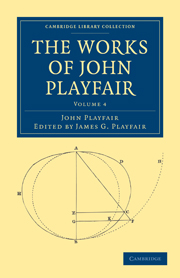
The Works of John Playfair
-
- Published online:
- 07 September 2011
- Print publication:
- 30 June 2011
- First published in:
- 1822
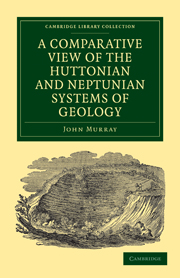
A Comparative View of the Huttonian and Neptunian Systems of Geology
- In Answer to the Illustrations of the Huttonian Theory of the Earth, by Professor Playfair
-
- Published online:
- 07 September 2011
- Print publication:
- 02 June 2011
- First published in:
- 1802
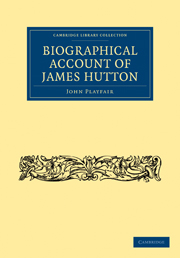
Biographical Account of James Hutton, M.D. F.R.S. Ed.
-
- Published online:
- 07 September 2011
- Print publication:
- 02 June 2011
- First published in:
- 1797
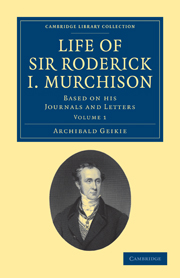
Life of Sir Roderick I. Murchison
- Based on his Journals and Letters
-
- Published online:
- 07 September 2011
- Print publication:
- 02 June 2011
- First published in:
- 1875
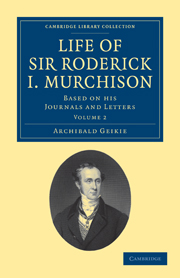
Life of Sir Roderick I. Murchison
- Based on his Journals and Letters
-
- Published online:
- 07 September 2011
- Print publication:
- 02 June 2011
- First published in:
- 1875
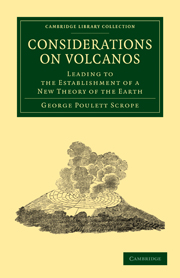
Considerations on Volcanos
- The Probable Causes of their Phenomena, the Laws Which Determine their March, the Disposition of their Products, and their Connexion with the Present State and Past History of the Globe
-
- Published online:
- 07 September 2011
- Print publication:
- 19 May 2011
- First published in:
- 1825
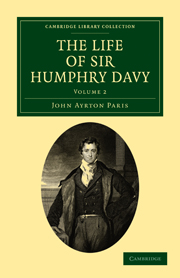
The Life of Sir Humphry Davy
-
- Published online:
- 07 September 2011
- Print publication:
- 02 June 2011
- First published in:
- 1831
